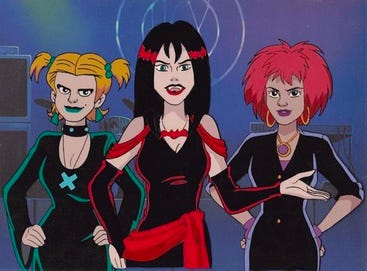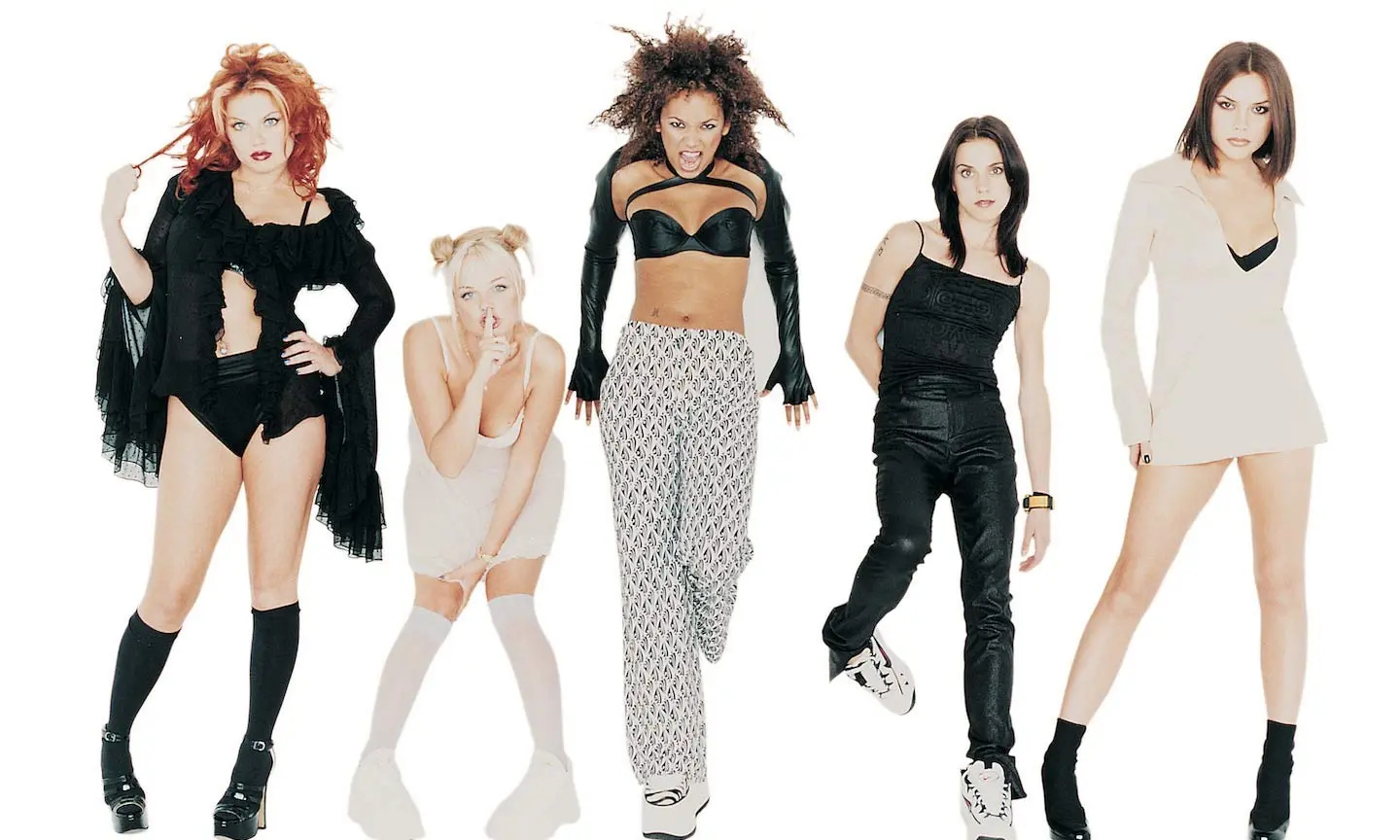START A COVEN
on literary "networking," the "Literary It Girl" and the ol' idea of a social media "engagement pod"
I got the JOY of spending an hour last night with a Mila Jaroniec’s Catapult novel generator class to talk about publicity (the last generator of its kind—RIP, but you can find more classes from Mila and others at Writing Co-Lab), and on my mind during the conversation was this piece by Sophia June in Nylon called “The Makings Of A Literary It Girl.”
(Before I go further, shout out to Mila’s newsletter Black Lipstick, which you should subscribe to if you are not already).
Okay, I’m not going to lie. I read this essay in Nylon and I was an immediate HATER. So, let me get the angst out and then I’ll get to why it’s so successful. And my two cents is that we have to acknowledge literary friendships and “It Girl” status collapses outside of NYC (unless your Gabrielle Bates, all love to her too!)—Props to Zoe for some of the language in this paragraph, my go-to editor!
The NYC literary scene is arguably more capable of granting someone a novel in the current big four publishing landscape than the MFA literary scene. I SAID IT, no TAKE BACKS. Publishing is still very much a “who you know” type of endeavor. Good books sell everyday without those networks, but good books also get shelved everyday because there’s a lack of network. Sigh. (Platform, platform, platform, but it’s different than network, network, network, and further different from community, community, community, which I think is the word and testament of the Nylon piece).
It’s why (community! networks! locals!) you’ll see more books from the NYC MFA programs than anywhere else (this isn’t to say they didn’t earn it because those books are great!), and of course there are cons to living (and costs) in NYC.
But these lines, “Publications like Forever Magazine, The Drift, and Copy are publishing newer writers and hosting events that feel accessible to people outside of the MFA circuit. It’s a change led by a new class of literary It Girls: savvy writers who are redefining what it means to market a book — and in doing so, tackling the challenges of self-presentation that every artist faces.” While I support The Drift and Forever Mag (totally, both are great), I do think they represent a sort of NYC literati that isn’t available widely, and while it’s an alternate to the MFA circuit—it’s a VERY viable alternate. (Do people think that all MFA writers know each other because I left my MFA with a new best friend and a lot of publishing cred, but not a tight little band of other writers?).
Then, we get to the part about books as objects. It’s something that’s unique to the book industry that books are both objects (beauty, culture, class, decoration, etc) AND art that we engage with longer than most other forms of art. So, we purchase books both for aesthetic reasons + what they say about us as individuals, but also to consume LITERAL ART. This is ~very~ present in the Nylon essay with the fact that these authors are creating merch, swag, perfumes, cookies, keychains, stickers, magnets, book trailers, interesting book launch spaces (not bookstores but fun, community establishments), etc. But none of this is … new, or created by the (l)it girl, it’s simply a *scene.*
(Though I would argue here that we do have to support bookstores as a part of the publicity journey because that relationship should be two-sided and community-driven ESPECIALLY celebrities launching books who could do so much for their local booksellers).
Are Allie Rowbottom’s ideas for book publicity cool? Yes. Would any other author throw a party with name-power & have it co-hosted by a literary entity if they could afford to? Also, yes. Can every writer afford Etsy book miniatures and L.L. Bean totes? No. I immediately thought about the cost of L.L. Bean backpacks for my two kids when I read that.
And in the same breath to have this quote from Madeline Cash (whose book IS stellar, stellar, stellar, and the rest of her writing is too), “You have to sell yourself. I taught at Sarah Lawrence recently and the kids were like, ‘How do you become a writer?’ and I was like, ‘Have generational wealth,’” says Cash. “If you don't rich parents, being a writer is one part talent and two parts networking. Being a writer in 2023 is also being an agent and editor and PR girl” in the same line-up with all these bought-marketing tactics is something. I DO agree that marketing AND talent help boost a book though (arguably a magic concoction of both).
It’s like the advice is be-rich, hot, or buy time. Because networking and publicity are TIME jobs. You don’t necessarily need CASH but you do need TIME. And working writers simply don’t have that and publishers are giving less and less of it.
While Allie Robottom did a great job culling the social media (re: instagram) audience for the launch of Aesthetica, she’s also in what I’m going to call a LITERARY COVEN. As is everyone quoted in this Nylon essay. Which I’m going to define as a group of writers who have come together as friends and community members to support one another as literary entrepreneurs. I use this term rather than writers because I think the idea is that these women are “doing it all” in a way that makes them not only writers, but sales people. (See the Cash quote above). This coven is what you hope to get from an MFA but most of us leave an MFA like this tweet from Erin below).
They support the success of each project through ACTUAL, TANGIBLE literary work and community.
I’m going to be really creepy here, this is your warning. Like seventh grade trying to find out your chatroom boyfriend’s real face on Ask Jeeves creepy.
Going through the reviews of Aesthetica by Allie Rowbottom. Samantha Leach of Bustle reviewed it, she liked Sophia’s tweet about the essay and is in this friend group. Nada Alic, blurbed Allie’s book—she’s named in the essay. Marlowe Granados blurbed the book, she’s in the essay. Delia Cai who recently wrote about “reaching peak it girl” for Vanity Fair, interviewed Allie (thematically aligned—good publicity), Astra Mag printed a review (RIP, but Nadja Speigelman was the editor there and she’s a Sackett alum, same for Rowbottom), Emmeliene Cline wrote about Aesthetica for Cleveland Review of Books, wrote an essay “On It Girls” for Catapult last year (and I’m so sad it’s gone because it’s a great essay), Shelby Hinte (a brilliant editor at Write or Die, a cool girl adjacent magazine for sure) interviewed Rowbottom for Electric Literature, Genevieve Hudson shares an agent with Emmeliene Cline (and Chelsea Hodson and many literary cool girls) and wrote about Aesthetica for LARB, Brock Colyar interviewed Rowbottom for The Cut, they are friends on Instagram and Brock profiled Cory Kennedy NY MAG the “literary it girl” previously photographed by Cobrasnake (as mentioned in June’s Nylon piece as the photographer at one of the parties hosted by Forever Mag), and Madeline Cash (founder of Forever Mag—also profiled by June in February for Nylon) interviewed Rowbottom for BOMB, they all did a Guerrilla Reading in LA together, they all read together for Stories at Echo Park, and Sophia chose Madeline’s book as a “21 Books We’re Most Excited About in 2023” (again, for Nylon), while Nada and Chelsea blurbed the book.
What I’m saying is … the “It Girl” is really an “It Coven.” A group of writers supporting one another from their various platforms over and over, for every one of their books or through their media jobs, in a way that helps those books reach readers—and tells readers, I am in this crowd / coven / scene, and my book is in conversation with these other books that you loved. In fact, I, the author, am literally in conversation with these other writers. These connections are honestly a publicist’s dream. But I wish we were more honest about them existing?
It’s what we *should* all be doing as writers, right? Networking, connections, the big freshwater pond of “literary ecosystem,” but they’re doing it at a level that is arguably more successful because of connections, REAL connections and friendships, good agents and industry professionals that can make those connections, and support (and let’s be honest, because of NYC).
What it isn’t, I guess I want to say, is some secret sauce, or even necessarily $CASHOLA$ (though the parties have to be so much fun, and I’m sure they were covered by big media, and I’m sure they were expensive). The essay is a little bit girl bossy, BUT that’s kind of the point? Except the new generation of girl bosses isn’t some Glossier lone wolf (I haven’t read the book yet, but I want to), it’s a girl group.
And that, my friends, can be created in so many ways. Just look at the Spice Girls. My advice: start building yours.
As always, the Pine State calendar of events lives here. Request books for review & interview & feature here, add yourself to our reviewer list here, and buy our books here! You can also contact us through our website, Pinestatepublicity.com.
ICYMI: Watch & listen Jehanne Dubrow and Julia Kolchinsky Dasbach in conversation about Circling History: What Carries the Body on Brown Bag Lit, Kate Doyle was in Zibby’s podcast this weekend and published this essay on young women’s stories in Chicago Review of Books, listen to Susan Kiyo Ito reading from the opening of her memoir in Poets & Writers, an awesome essay on body autonomy for children by Margo Steines and her partner Nic in Slate, Donna Spruijt-Metz is a 5 Over 50 in Poets & Writers, Beth Kephart’s My Life in Paper was reviewed by Foreword Books, Jenny Sadre-Orafai’s Dear Outsiders was reviewed in The Rumpus, Sean Enfield, author of Holy American Burnout! was on Talk of the School, Holly M. Wendt, author of Heading North, was profiled in Lebtown, and more can be found on our Instagram and Twitter.











As someone who shudders at the word and idea of networking, I appreciate the reframing here to coven--your people, but also, your empowerment.
Literally just wrote about mine today, we just call ours a writers’ group (bc that’s what it is!).